People of significance
Fort Anne National Historic Site

© Parks Canada
The people connected to Fort Anne National Historic Site are the famous and almost unknown, but all made substantial contributions to Canadian history.
This remarkable history begins in the early 17th century with the coming together of people from three cultures: First Nations, French, and English.
It ended after the American War of Independence brought thousands of Loyalists to the shores of Nova Scotia, many of whom settled in and around Annapolis Royal. All told, their stories, and countless others, would change the country forever.
Charles de Menou d'Aulnay
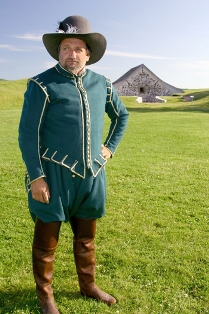
After Port-Royal officially returned to France in 1632, the new French governor for Acadia/Nova Scotia, Isaac de Razilly, arrived to begin a new settlement. One of his key collaborators was his cousin and lieutenant, Charles de Menou d’Aulnay. In the beginning, d’Aulnay transported furs, fish and lumber to France and brought back supplies and skilled labourers to construct a fort at LaHave.
When Razilly died suddenly in 1636, his brother, Claude de Razilly, became responsible for the Acadian colony. Obligated by business dealings to remain in France, Razilly authorized d’Aulnay to lead the colony in Acadia. One of d’Aulnay’s first decisions was to relocate the settlement Isaac de Razilly had establish in LaHave to Port-Royal. The site had been operating as a satellite post to LaHave since the Scots’ departure. Unlike LaHave, Port-Royal offered fertile lands and the potential for agricultural development. With the arrival of more French settlers including salt-marsh workers, the construction of the dykes began.
While the colony began to evolve as a farming community, its main focus remained the fur trade. For years, D’Aulnay’s battles with his adversary and the former governor, Charles de Saint-Etienne de La Tour, over control of the trade in Acadia consumed much of his energy and finances. La Tour had survived the destruction of the Port-Royal Habitation as a boy and grew to develop a robust trading base at Cape Sable and later at the mouth of the Saint John River. D’Aulnay, as a newcomer with ties to the aristocracy and as Razilly’s second-in-command, clearly threatened La Tour’s power base. An awkward bipartite administrative system only aggravated the situation by giving each of them one-half the profits from the fur trade and the right to inspect the other’s territory. This dynamic led to a clash of interests and personalities that continued to escalate. Eventually, the acrimony that developed between the two Frenchmen spiraled into a progression of raids, reprisals, ambushes, blockades, pursuits, escapes, imprisonment and desperate appeals from both sides to the powers in France for help.
A pivotal shift came in 1643 when La Tour attacked Port-Royal. The raid was incited by a rash of events the past year starting with d’Aulnay returning from France with four ships loaded with supplies, a five-month blockade of the La Tour fort on the Saint John River, Fort-Sainte Marie, and La Tour, who managed to escape, returning from Massachusetts with reinforcements. D’Aulnay, in turn, fled to Port-Royal with La Tour in pursuit. When d’Aulnay refused to meet with his enemy, La Tour attacked, burning a mill, killing livestock and seizing a ship loaded with furs and supplies.
The civil war between the two Frenchmen did not end there. During La Tour’s absence from the Saint John early in February 1645, d’Aulnay unsuccessfully attacked Fort Sainte-Marie. When in April he learned from deserters that La Tour was away at Boston in search of food and trade goods, d’Aulnay resolved to attack again. He arrived at Saint John with a force of around 200 men. In his absence, La Tour’s courageous wife, Françoise-Marie Jacquelin, was left in charge of the fort. After several days of fighting, a hand-to-hand clash ensued within the fort resulting in heavy losses on both sides. Finally, d’Aulnay called off his men and swore that he “would give quarter to all” if Madame de La Tour would capitulate. With her small garrison reduced by casualties, the fort heavily damaged, and both food and ammunition running low, she ordered her men to surrender. But once in possession of the fort, d’Aulnay went back on his word, disregarded the terms of capitulation, and ordered the arrest of the La Tour garrison. D’Aulnay’s forces erected a gallow and all of the soldiers captured at Fort La Tour were hanged, except for one man who agreed to be the executioner of his comrades. Madame de La Tour was forced to watch the hangings with a rope around her own neck. She died three weeks later. News of the capture of his fort and of his wife’s death reached La Tour in Boston where he was gathering provisions. The next year he moved to Quebec, where he was warmly received by the French governor.

Even before the ending of this tragic feud, d’Aulnay, realizing how vulnerable the fort was to aggressors, moved to construct a more substantial fortification that would hold several buildings and measure about half the size of today’s fort. This new rectangular earthwork had a bastion at each of the four corners and a triangular-shaped outer work, called a ravelin, facing the river. The design resembled a smaller version of today’s fort.
At the same time, he continued to expand the settlement. According to testimonials of settlers, d’Aulnay built “five pinnaces and several shallops, and two small vessels of about 70 tons each, with two farms or manors, and the necessary buildings." He also established two aboriginal schools. While he is often cited for his battles with La Tour, d’Aulnay’s most notable achievement was the establishment of the Acadian people at Port-Royal.
In 1647, d'Aulnay became governor-general and seigneur of Acadia by royal proclamation. Three years later, his canoe capsized in Port-Royal Basin. After remaining an hour and a half in the icy water, he died of exposure. According to his confessor, he was likely exhausted from working in the pouring rain two days earlier while laying down the traces for a new dyke. He left behind his wife, Jeanne Motin, and eight young children, along with layers of debts. He was buried in the church at Port-Royal. In an ironic twist, D’Aulnay’s widow later became the wife of his former rival, La Tour.
Jeanne Motin
Jeanne Motin was a French settler and daughter of an associate of Razilly’s trading company. In 1636, at the age of 20, she sailed from France accompanied by her two sisters and her brother-in-law. In the same year, she married Charles de Menou d’Aulnay, who was some 12 years her senior. The couple had four sons, who entered the army and died in battle, and four daughters, all of whom became nuns.
By the time d’Aulnay died in 1650, Port-Royal comprised of around 300 French residents. As his widow, Madame D’Aulnay’s ability to carry on with her husband’s work was limited considerably by his debts incurred from his colonizing efforts and battles with Charles de Saint-Étienne de La Tour.
Persistent creditors demanded payment from Madame d'Aulnay. Among the most aggressive was Emmanuel LeBorgne from La Rochelle, France, the future governor of Acadia, claiming the d’Aulnay estate owed him 260,000 livres. Others that made claims against Madame d'Aulnay included Nicolas Denys, the holder of one of the largest seigneuries in Acadia. In 1651, LeBorgne sent an agent to Port-Royal to seize the fort. Capuchin priests tried to intervene, but the fort was pillaged. The situation was further complicated after Madame d’Aulnay’s intendant went to France and made unauthorized arrangements with the Duc de Vendome to assume half the depts in exchange for half of d’Aulnay’s estate and an equal share in the fur trade.
Around this time, hearing of d'Aulnay's death, La Tour returned to Paris where he was absolved of any wrongdoing, stemming from his attack on the fort in 1643. He was made governor of Acadia and returned to Port-Royal, then to his old fort along the Saint John River. With the exception of Denys's seigneury, La Tour once again came to control Acadia.
On February 24, 1653, La Tour, at the age of 57, and the widow of his old enemy, Jeanne Motin, married. The couple would have five children.
The family lived at the mouth of the Saint John River until about 1656 when they moved to Cape Sable. La Tour and Jeanne Motin died in the 1660s. Their five children would remain in Acadia and play important roles in the later history of Port-Royal.
Jean-Paul Mascarene
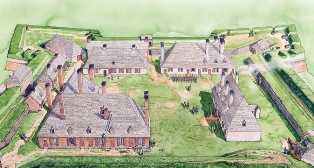
French Huguenot, engineer and military officer, Paul Mascarene joined the ranks of the British army in 1706. He was later commissioned a lieutenant and was at Portsmouth in 1708 when he received orders to join a force being assembled in New England to attack Canada. Two years later, Mascarene participated in the expedition, capturing Port-Royal and securing Britain’s stronghold on Nova Scotia.
During the next five years Mascarene divided his time between Boston, and the garrison in Placentia, Newfoundland, where he was in charge of an infantry company. In August 1717, he was commissioned a captain in Colonel Richard Phillips’ 40th regiment. After Philipps became governor of Nova Scotia in 1719, Mascarene returned to Port-Royal the next year as an engineer and officer both in Philipps regiment and on the governor’s Board of Ordnance. One of Mascarene’s major tasks over the next several years entailed trying to salvage the dilapidated fort at Port-Royal/Annapolis, despite the Board’s reluctance to spend any money on maintenance or repairs. Finally in 1733, the Board gave orders for extensive repairs and construction.
A pragmatist by nature, he pursued a conciliatory policy with the Acadians stating that an oath of general neutrality was necessary to keep the province safe from attack. Nevertheless, he was severely challenged by his officers and Board of Ordnance.
In 1744, Mascarene was appointed Lieutenant Governor of Annapolis Royal. In August, the fort underwent a month-long attack from Captain François du Pont Duvivier of Louisbourg and First Nations warriors. Blockaded inside the fort with his exhausted infantry and several families, Mascarene decided to delay surrender until the arrival of French reinforcements. They never came. Instead, Massachusetts Governor William Shirley sent a fleet of vessels well ahead of the French and the attackers retreated.
In 1749, Governor Edward Cornwallis, contrary to Mascarene’s approach, demanded that the Acadians take an unequivocal oath of allegiance to the British crown. Unable to force compliance, Cornwallis did not pursue the issue for the remainder of his governorship. In 1751, he sent Mascarene to New England to renew the 1726 treaty with First Nations peoples. Although he corresponded with friends in Annapolis for several years, Mascarene never returned to Nova Scotia.
Francis Nicholson
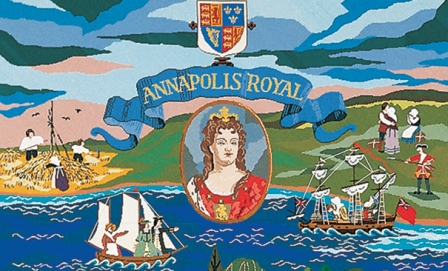
As the commander-in-chief of an expedition to regain Nova Scotia/Acadia, Francis Nicholson sailed from Boston in September, 1710, determined to overtake the garrison at Port-Royal. His flotilla comprised five British warships, 30 transports and approximately 2,000 men—British and New England officers, 400 British marines and 1,500 recruits.
The fleet entered the basin leading to Port-Royal in early October. Under the cover of guns, Nicholson disembarked his infantry beyond the range of the fort, beginning a siege that soon gave his forces the upper hand. Facing overwhelming odds, Governor Daniel d’ Auger de Subercase surrendered the fort a week later. During the final transfer a few days later, Subercasé handed Nicholson the keys to the garrison on the bridge of the fort gate.
The victory gave the English control over the Port-Royal fort and over the inhabitants living within a five-kilometre radius of the fort. The jubilant victors renamed Port- Royal, Annapolis Royal, in honor of Queen Anne. The “Royal,” according to historians, may have been added to distinguish it from Annapolis, Maryland, which Nicholson named while serving as governor of Maryland from 1694 to 1699.
The battle ended Port-Royal’s final command as the French capital. Nicholson served as governor of Nova Scotia from 1712 to 1714. He died in London around 1728 and is buried in the parish of St. George in Hanover Square.
Rose Fortune
After the American Revolution, several thousand people who remained aligned with the British emigrated to Nova Scotia. This wave of refugees included a contingent of black men and women. Like thousands of blacks living in the Thirteen Colonies during the war, some had crossed lines and joined the British in exchange for their freedom. Others remained the slaves or indentured servants of white loyalists. The black emigrants who arrived in Annapolis Royal during this period represented a mixture of these three groups. Among them was Rose Fortune.
While few records exist to tell a detailed and accurate story about her early origins, some historians have taken note of the Annapolis Royal muster roll from 1784. The log describes a child over ten years old of parents “Fortune and wife,” listing them as “Free Negroes.” Whether this was Rose Fortune remains a mystery. What is clear is that Rose Fortune grew to become an entrepreneur and one of Annapolis Royal’s most notable and respected figures during the first half of the 19th century.

The clearest depiction of her comes from a watercolour painted in the 1830s. It shows a middle-aged woman wearing a man’s overcoat and a straw hat on top of a lace cap tied tightly under her chin. She is carrying a straw basket and appears to be on the move. The image reflects testimonials from those who encountered Rose Fortune and described her as bold and determined. Around 1852, a Lieutenant-Colonel Sleigh of the 77th Regiment wrote of an encounter with Rose Fortune:
“I was aided in my hasty efforts to quit the abominable inn [where he had been staying] by a curious old Negro woman, rather stunted in growth…and dressed in a man’s coat and felt hat. She had a small stick in her hand which she applied lustily to the back of all who did not jump instantly out of the way. She was evidently a privileged character.”
By the time her portrait was painted, she had developed a successful cartage business in Annapolis Royal. Using a wheelbarrow or wagon, she transported luggage between the busy ferry docks and nearby homes and hotels. She also offered a wake-up service to customers to make certain they caught their boat to Digby or Saint John on time.
Later, Rose Fortune became the town's unofficial police officer, patrolling the town and wharf. She imposed curfews and kept the youth of the busy seaport town in line. She lived to around 90 years old.
After Rose Fortune’s death, her descendents carried on her business under the name Lewis Transfer. The business was sold in 1960 but continued under new ownership until 1980.
In 1984, Daurene Lewis, a descendant of Rose Fortune, became the first black mayor of Annapolis Royal and the first black female mayor in Canada.
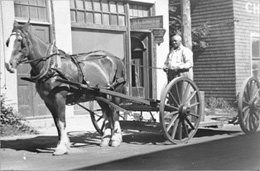
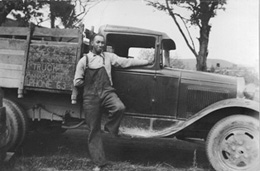

Mi’kmaq Alliances
 Illustration from the book “The Micmac and How Their Ancestors Lived Four Hundred Years Ago”
Illustration from the book “The Micmac and How Their Ancestors Lived Four Hundred Years Ago” © Parks Canada/K. Kaulbach
Life for the Mi’kmaq and other aboriginal people would change forever after the arrival of Europeans. While the French maintained a mostly cooperative relationship with the Mi’kmaq and with their Abenaki allies, the relationship between the British and the Mi’kmaq was often turbulent.
As early as 1605, when Port-Royal was abandoned for a time by the French settlers, the site was left in the hands of a Mi’kmaq chief for safe keeping. Over time, the bonds between the two nations deepened through intermarriage. During the 17th and 18th centuries, French troops and Mi’kmaq warriors became allied against the British expansion. The British too, mostly by giving gifts and trading goods, developed military ties with native people. The battles of Bloody Creek clearly illustrate these alliances.
After the British succeeded in capturing Port-Royal in 1710, the battered fort needed repairs to make it serviceable. Acadian contractors up the Annapolis River agreed to cut wood for the fortifications and float the timber down to the fort. Supplying timber for the fort, however, would have disastrous consequences. The task was thwarted by Aboriginal warriors who harassed the Acadians for helping the English and cut adrift their rafted logs. The situation became dire enough that Governor Samuel Vetch decided to send a force upriver to placate the region.
Some 70 soldiers left Annapolis Royal on June 10th, 1711, in a whaleboat and two flatboats. When it reached René Forêt River near present-day Bridgetown, the whaleboat was confronted by Abenakis who had gathered there in advance of an attack on Annapolis Royal. The British were badly outnumbered and soon overcome. Around 18 men were killed and 12 wounded. All but one soldier was taken prisoner. The French later traded the prisoners for food and supplies.
Following this first battle, Colonel John Livingston, Vetch’s cousin, returned from New York with about 50 men recruited from among the Iroquois Confederacy. Their mission: scouting and preventing attacks on the fort by French soldiers and their Mi’kmaq, aboriginal allies. A fort for the soldiers was constructed at the lower end of Annapolis Royal. The Iroquois company was dismissed in the spring of 1713.
In 1755, some Acadians who had escaped the deportation formed resistance bands in the forests, often linking up with their Mi'kmaq allies. In December 1757, a work party from Annapolis Royal was cutting firewood near the site of the first battle when they were ambushed by an Acadian and Mi'kmaq force. One man was killed and another seven were taken captive. In response, 130 British troops were dispatched to recover the prisoners.
When British troops crossed a bridge on the René Forêt River on the morning of December 8th, they were attacked by the Mi'kmaq and Acadians. The British suffered 25 casualties before retreating back to Annapolis Royal. Despite defeating the British, the Mi'kmaq and Acadian force did not follow it up by attacking Annapolis Royal. The René Forêt River was later renamed Bloody Creek in honour of these two battles.
- Date modified :